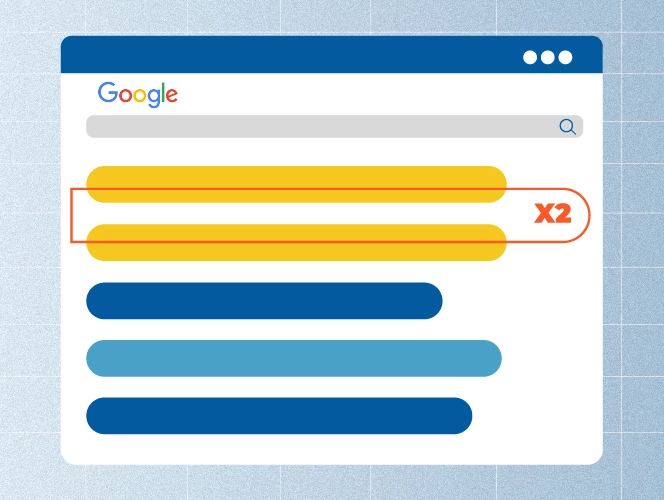Alright, let’s start with a question: Have you ever spent hours writing the perfect blog post, only for it to get zero attention? Hmm… Disappointing, right? It may be because of weak content optimization strategies.
Or you’ve got amazing content, but no one’s seeing it. That’s where SEO comes in.
In fact, 72% of marketers are creating more content than last year, but since people seek value and clear answers, the real goal is to provide content that truly helps them. And, a small secret! It’s also about making sure your content is helpful, valuable, and most importantly, findable by the people who need it. So, the goal isn’t to write endlessly—it’s to write effectively.
Want to know how to make your content work for you?
Stick around! This article is about the secrets of content optimization for SEO. You’ll learn what it is, why it’s important, and how to write blog posts that are SEO-friendly and will actually get noticed.
We’ll also walk you through important content optimization strategies to make sure your content is seen by the right audience. So, keep reading!
What is Content Optimization?
Content optimization is the process of making your content more valuable and easier to find by search engines and your audience.
It also involves adjusting your content to match what people are searching for, making it more relevant and engaging.
To put it simply, content optimization strategies ensure your blog posts, articles, or web pages show up when someone searches for the information you’re providing.
The Importance of Content Optimization for SEO
As we already mentioned, content optimization is important because it helps your content get noticed by the right people at the right time.
So, without it, your valuable content can remain buried in search engine results, missing out on visitors and even potential customers.
Then, by using content optimization strategies, you ensure that your content aligns with what users are searching for, increasing the chances it will rank higher. And, higher rankings mean more traffic, better engagement, and more opportunities to convert visitors into loyal customers.
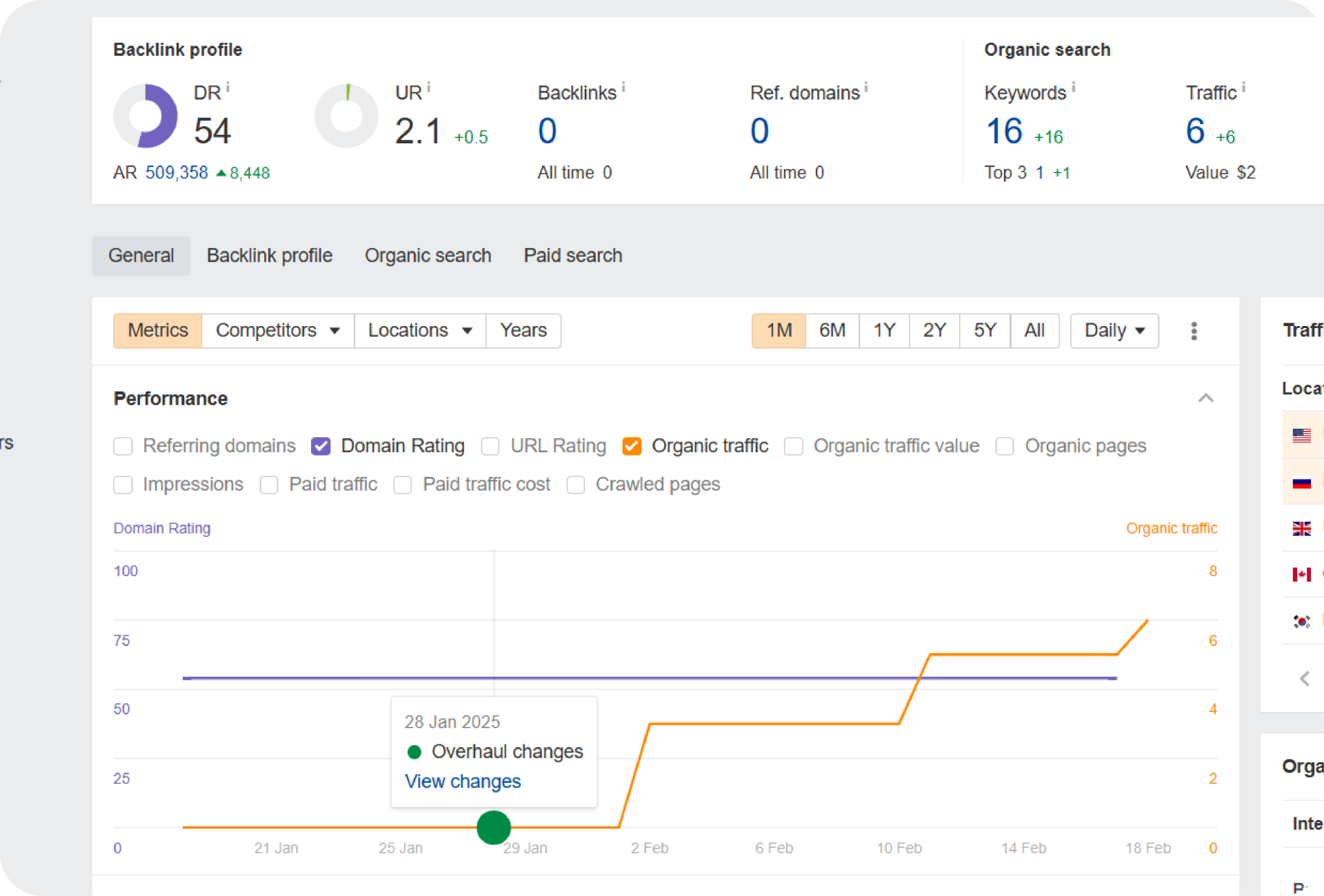
Here is an example of one of the articles written by our content specialists:
We updated the article with fresh information. The number of targeted keywords increased by +16. As a result, the page saw an increase in organic traffic by +6, showing the impact of well-executed content optimization strategies.
So, simply put, the importance of content optimization lies in its ability to turn great content into real success!
6 Content Optimization Strategies That Work
When it comes to content optimization strategies, our approach is simple: make your content easy to find and valuable for your audience.
So, let’s read more to find out the key strategies we use;
Doing Keyword Research
You might be asking, what’s the best way to start with content optimization? It all begins with keyword research!
So, our SEO specialists begin by researching the most relevant primary keywords using Ahrefs.
But what is Ahrefs? It’s a powerful SEO tool that helps us analyze keywords, track rankings, and find opportunities to improve content visibility. And, why do we focus on keyword research? Because understanding what people are searching for allows us to create content that answers their questions.
Step 1: type your keyword or phrase into Ahrefs’ Keyword Explorer to get a list of related keywords.
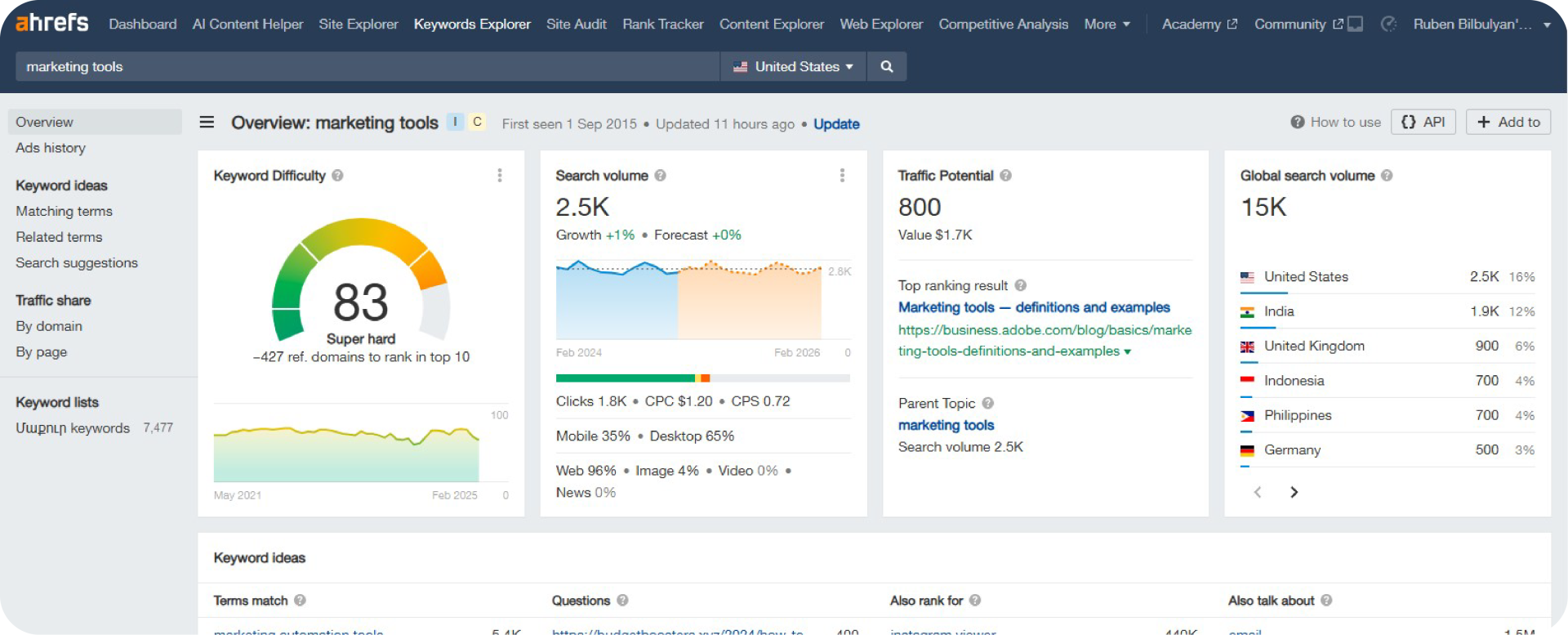
Step 2: Review keyword metrics. Look at the search volume and keyword difficulty score to choose the best keywords that will help your content rank higher.
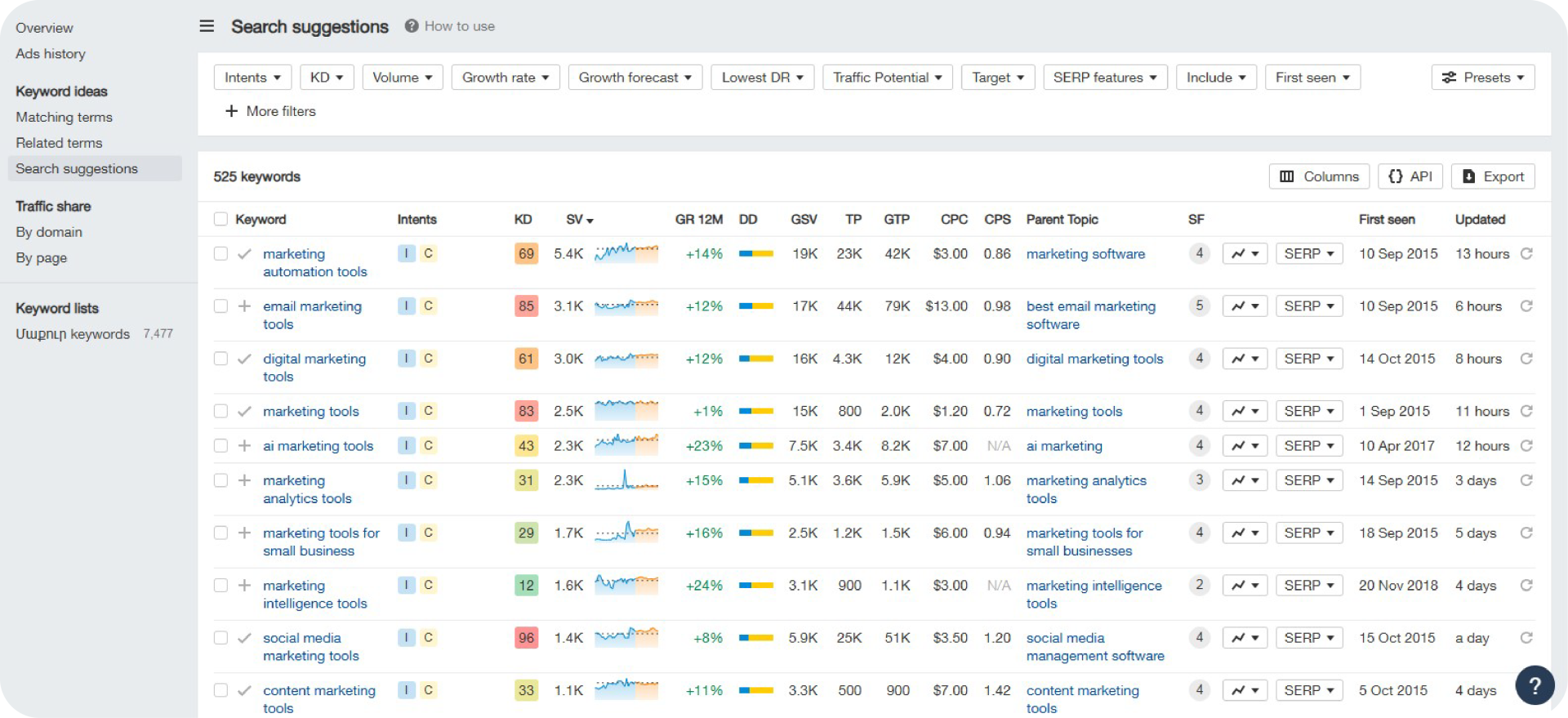
However, we also avoid over-optimization. What do we mean by over-optimization? It’s tempting to stuff your content with as many keywords as possible, but that can make the writing sound unnatural and less helpful. A quick keyword density check can help you maintain balance and ensure your content stays both readable and SEO-friendly.
Instead, we use keywords in a natural way that makes the content easy to read while boosting your SEO. If you want to learn more about striking the right balance, check out our guide on how to avoid keyword stuffing while keeping your content both readable and search-friendly.
Adding Schema Markup After Blog Publishing
Once your blog is live, our team adds Schema markup.
Why do we add schema markup? It helps search engines better understand your content, improving how your blog appears in search results.
By implementing Schema markup, we increase the chances of your content appearing in rich snippets or other special features on Google.
So, this little step makes a big difference in your SEO performance, giving your content extra visibility and more opportunities to engage with users.
Using Visuals
We believe visuals are more than just eye-catching—they’re a powerful tool in content optimization.
You can include visuals such as screenshots, illustrations, and organic ranking graphics to ensure your content stands out and delivers real value to your audience.
So, visuals can help break down complex information, making it easier for readers to understand, while also keeping them engaged.
For example, when we showcase real organic ranking visuals, it allows users to see how content optimization strategies have worked for others, giving them a clearer idea of what to expect.
Using Helpful Content
Helpful content is at the core of what we do. We make it a priority to create content that answers users’ questions in the most effective way possible. This includes offering downloadable resources like checklists, efficient glossaries, guides, and templates that directly address users’ needs.
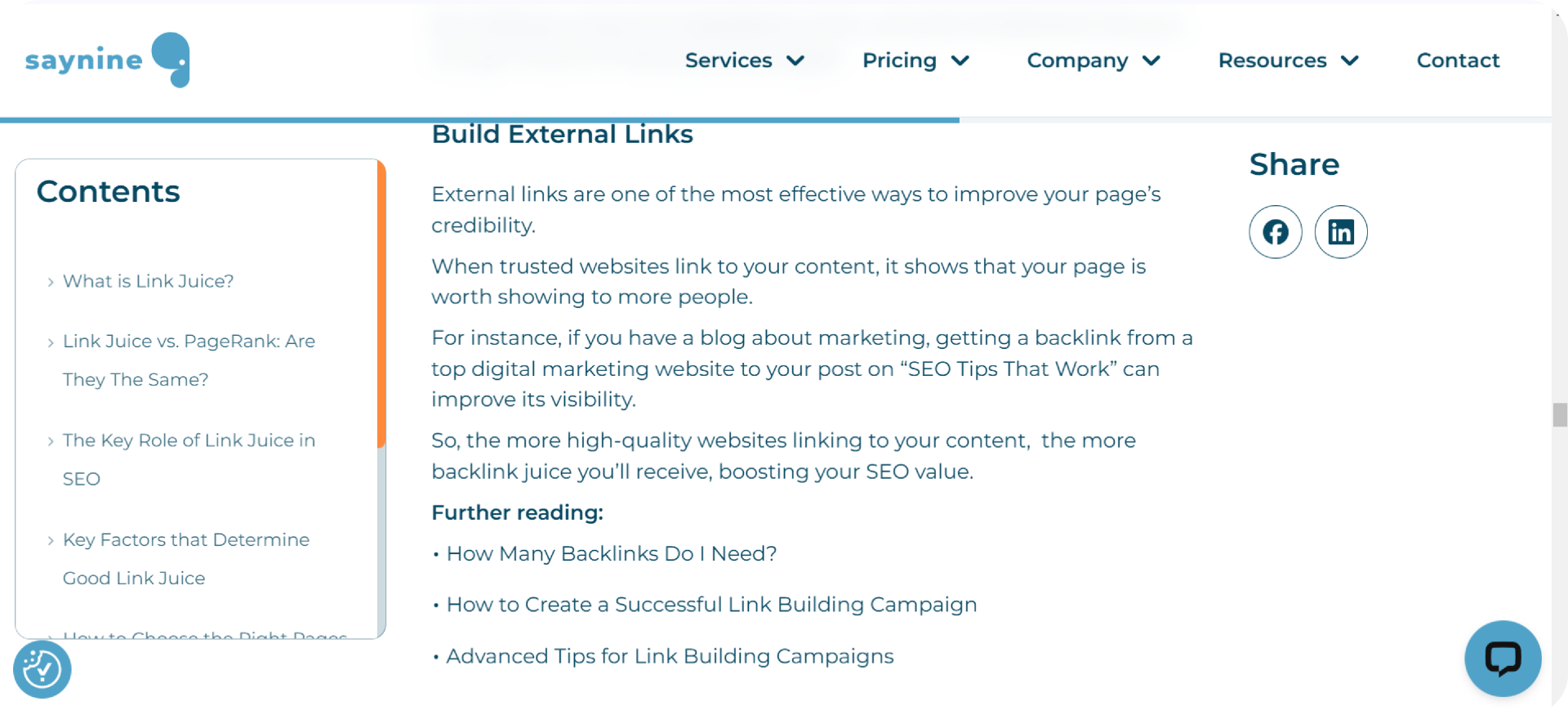
Here you can see in this screenshot, where the author provides additional readings that help simplify the topic, making it more easier to understand.
These practical tools serve as valuable takeaways, and they show our commitment to providing content that not only ranks well but also adds real value.
By prioritizing helpful content, we align with the importance of content optimization, ensuring that our readers not only find our content but also find it useful enough to keep coming back. Coming up with relevant blog post ideas ensures that our content remains engaging, fresh, and aligned with what our readers are actively seeking.
Plus, content that clearly solves a problem or answers a question also has a better chance of being highlighted in Google AI Overview, which favors direct, informative responses to user queries.
Using External and Internal Links
So, when optimizing content for SEO, using internal and external links is essential to improving SEO.
Our content optimization system focuses on strategically using internal links that direct visitors to relevant and high-performing pages on your website. This helps users find valuable information quickly, while also improving your website’s SEO by showing search engines how your pages are interconnected.
External links, however, need to come from authoritative sources and be highly relevant to the content. Our content specialists ensure we use content optimization tools to find the best authoritative websites to link to.
Linking to trustworthy external sources not only improves your content’s credibility but also signs to search engines that your content is supported by reliable references, boosting rankings.
Update Articles
Regularly updating your content is the last important strategy for staying relevant in search engine rankings.
The importance of content optimization is highlighted in keeping articles fresh and current, particularly in fast-changing industries. So, what are the keys to content optimization? One of them is routinely updating content whenever there is new information to share, or when an article becomes outdated (usually after about 2 years). This ensures your content remains valuable and accurate to your readers.
By using content optimization tools and a well-structured content optimization system, we can easily identify which articles need updating. Whether it’s updating old stats, changing trends, or incorporating new information, these tools help us maintain a consistent level of relevance. Regular content updates also tell search engines that your content is current, which plays a crucial role in keeping your rankings high.
When you ask “how do you integrate SEO into your content,” the answer lies in continuously refreshing and optimizing your content.
Conclusion
As you can see, content optimization strategies are the secret sauce to making sure your content doesn’t just get found but also makes a lasting impact. By using the techniques we shared, you can give your content a serious SEO boost. The importance of content optimization will shine through in keeping your articles fresh and relevant.
We hope this article has provided you with a clear understanding of what is content optimization, what are the keys to content optimization and why it’s essential for improving your search engine rankings.
So, why wait? Start optimizing now and watch your content drive real results!
FAQ about content optimization
What’s the purpose of content optimization?
It’s all about making your content easy to find and ensuring it answers the right questions at the right time.
What’s the best way to track the effectiveness of my content optimization strategies?
Using content optimization tools helps you monitor keyword rankings and page performance to ensure your strategies are working.
How do links help with SEO?
Internal links guide visitors to more of your content, and external links to trusted websites make your content more credible.
Can I overuse keywords?
Yep! It’s all about balance—use them naturally so your content stays helpful and easy to read.
Is keyword stuffing a good strategy?
Not at all! Keywords should be used naturally, so your content stays readable and helpful, not forced.

Quiz Time
Let's put your knowledge to the test.
Leave your email below to get a SayNine certificate!
Are you sure?






